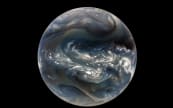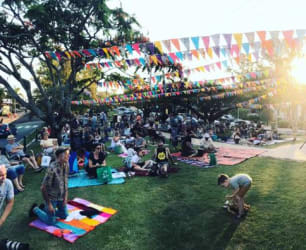It’s 2050.
The evening has produced a magnificent sunset and the crickets erupt in a chorus. The designer takes a quick 3R with her audicam. It’ll make a good addition to the sound that the car plays when it’s about to turn on the headlights. She loves designing audio for cars. Since petrol vehicles were banned ten years ago, the streets are so quiet. So quiet in fact she needs to keep coming up with noise to make humans aware of danger or movement associated with all the driverless EVs on the road. It’s so interesting how different brains interpret sound differently, she thinks. But some sounds are universal. Funny it was a musician and poet who worked that out and collaborated on the first car soundscapes they produced all those years ago. Although not so funny really; artists have always been observing and recording the human condition, they were the ones who first understood the nuances of the technology. The psychologists also took it to another level.
Art, science and technology have always been intrinsically linked, says Southern Cross University’s Associate Professor Grayson Cooke, and our best future sees them working together seamlessly.
“If we look forward 30 years into the future, what do we see? Our future audio artist in the paragraph above, using acoustic recordings to design soundscapes for EVs, lays out the ground rules; that art and technology must work together in the service of new and sustainable energy systems, that we exist as part of complex ecosystems, and that there is always more to learn from the more-than-human world,” he said.
“Developments in machine learning, big data and sensing and camera technologies already expand our knowledge and capacities in the commercial and public sectors, and give us amazing new artistic expressions. But the crucial question for the future is balancing these forces – my hope as always is that creative enquiry can mediate, moderate and influence for the better how we choose to live our lives,” he said.
Grayson’s work frequently takes scientific data and transforms it into a creative experience. He has for example combined satellite data to map clouds and the elemental forces that shape the earth over time. One of these, Himawari, is an art/science video project that turned Japanese satellite imagery into a video, showing the breathtaking movement of water vapour swirling around our planet, set to music by Dugal McKinnon.
“Working with the water vapour data recorded by the satellite – from the geostationary orbit 35,786km above the Earth – makes you realise we are all one organism under the giant swirling mass of water that makes our planet liveable.
“We often ignore the clouds – someone whose ‘head is in the clouds’ is someone not living in reality. And yet clouds and swirls of water vapour are literally what keep us alive!”
For his latest project, Grayson joined colleagues from the University – visual artist and environmental scientist Professor Amanda Reichelt-Brushett and wine writer and critic Dr Moya Costello – to present an intriguing workshop at the recent Sydney Biennale entitled ‘Smelling Rivers’.
‘Smelling Rivers’ was both a workshop and a sensory field trip, where participants were invited to collectively invent new vocabulary for interpreting river aromas and watery sediments.
“How do we describe the smells of the river, mangrove mud, dried algae and crab holes? How do we trace the stories of cyclical time with our noses? How do we engage sensorially with the foundation of our waters?” said Grayson. “The concept of sense, and smell especially, came up as a really rich, and fun, way of making people think about rivers differently. We had a blast at the Biennale, people loved pouring this sticky mud into beautiful glasses and having a good sniff, it feels so wrong but it works!”
Himawari from Grayson Cooke on Vimeo.
‘In Suspension’ The Smelling Rivers project was part of this year’s Sydney Biennale.









